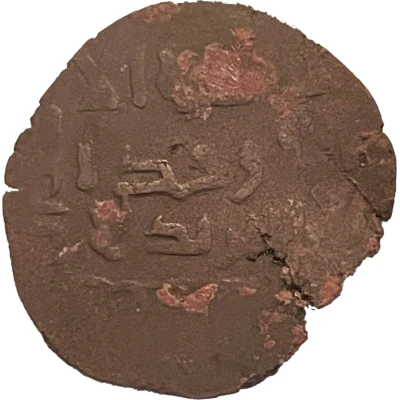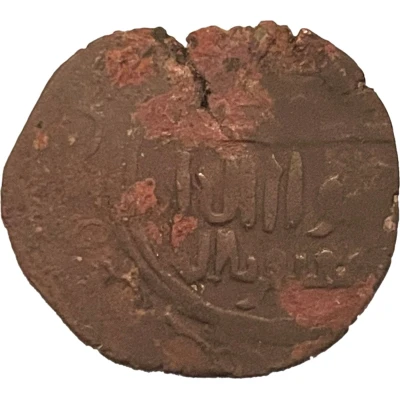


© Harrison Helms
1 Fals - Yelü Dashi
| Copper | 2.59 g | 24 mm |
| Issuer | Western Liao dynasty (Central Asia and Caucasia) |
|---|---|
| Emperor | Yelü Dashi "Dezong" (耶律大石) (1124-1143) |
| Type | Standard circulation coin |
| Years | 531-538 (1124-1143) |
| Calendar | Islamic (Hijri) |
| Value | 1 Fals |
| Composition | Copper |
| Weight | 2.59 g |
| Diameter | 24 mm |
| Shape | Round (irregular) |
| Technique | Hammered |
| Orientation | Variable alignment ↺ |
| Demonetized | Yes |
| Updated | 2024-10-04 |
| Numista | N#373202 |
|---|---|
| Rarity index | 100% |
Reverse
The second part of the first Sunni Kalima, citing caliph al-Muqtafi (reigned AH 530-555) and a shortened version of Qur'an IX, 33 in two solid circles.
Script: Arabic
Lettering:
محمد رسول الله المقتفي الله
ارسله بالهدى ودين الحق ليظهره الخ
Unabridged legend:
muhamad rasul allah almuqtafi allah
aruslh bialhudaa wadin alhaqi liuzhirah alkh
Translation: Muhammad is the messenger of God, caliph al-Muqtafi; He sent him with guidance and the religion of truth to manifest it, etc.
Edge
Plain
Comment
Although the Western Liao dynasty is better known for its rare cash coinage, Islamic-style coins have been discovered as well, almost exclusively found at the medieval site at Krasnaya Rechka, located between Bishkek and Balasaghun.There are two main types of fals coins that are seemingly silver washed and labeled as dirhams despite their copper-lead alloy thanks to the silver crisis caused by the outflow of silver coins to Eastern Europe in the 9th/10th century. One cites the 29th Caliph of the Abbasid Caliphate (al-Mustarshid) dated 527 AH and another cites the 31st Caliph of the Abbasid Caliphate (al-Muqtafi) with 531 and 538 AH as found dates.
The rare and often illegible nature of these coins leaves parts of their inscriptions up to speculation. Sa'd may refer to the Arabic name of Yelü Dashi, the founder of the Western Liao dynasty also known by his temple name, Emperor Dezong of Western Liao.
For more information, see the article below:
https://www.jstor.org/stable/42666301
Interesting fact
One interesting fact about this coin is that it was used as a form of currency during the Western Liao dynasty, which was a period of significant cultural and economic exchange between Central Asia and Caucasia. The coin's design and inscriptions reflect the blending of different cultural influences, with the use of both Chinese characters and Islamic motifs. This coin is a tangible representation of the rich history and diversity of this region during that time period.